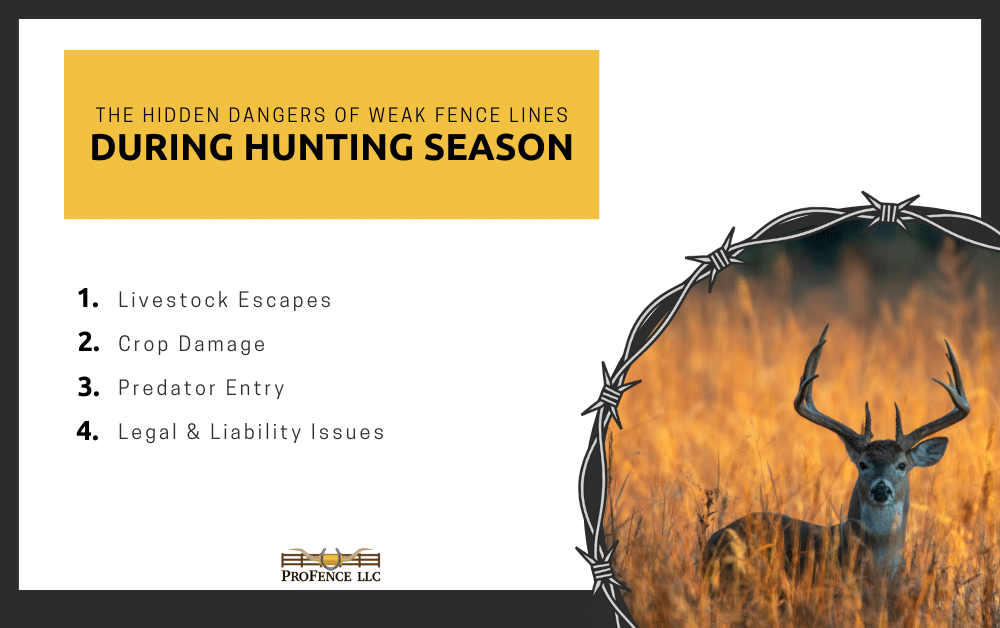Clearing land is often the first step for farmers looking to expand or improve their agricultural land. Whether you’re raising cattle, sheep, or goats, having clear and accessible grazing areas is key to keeping your livestock healthy and your operation running smoothly. It’s not just about taking down a few trees or bushes—effective land clearing can turn overgrown, unusable space into fertile, productive agricultural land that works for you. At ProFence, we know that balancing pasture development with taking care of the environment is crucial. That’s why we focus on sustainable clearing practices that help you get the most out of your land while keeping it healthy for the long haul.
Understanding Land Clearing for Livestock Farming
Why Land Clearing is Essential for Livestock
When it comes to preparing agricultural land for livestock, understanding the ins and outs of land clearing is essential. It’s not a one-size-fits-all process—different farms have different needs based on the type of livestock, the layout of the land, and the kind of vegetation that’s present. For instance, clearing dense brush or trees to create open pasture can make a huge difference in how you manage your livestock and optimize your agricultural land. Good land clearing can improve grazing areas, control invasive plants, and even help with soil management by allowing for better water flow and reducing erosion.
The ProFence Approach to Land Clearing
ProFence believes in a customized approach. We know that each piece of agricultural land is unique, and clearing methods should reflect that. From mechanical to more selective methods, the key is to find a balance that opens up your land for grazing while preserving the elements that protect your soil and water resources. Clearing the land right the first time helps you set up pastures that are easy to manage and sustainable, giving you and your livestock the best possible start.
Types of Land Clearing Methods Suitable for Livestock
Mechanical Clearing: The Heavy-Duty Approach
Mechanical clearing is one of the most common methods used to prepare agricultural land for livestock farming, especially when dealing with large areas of dense vegetation. This involves using heavy machinery like bulldozers, excavators, and brush cutters to remove trees, stumps, rocks, and thick brush. While it’s effective for quickly opening up large areas of land, it’s important to plan carefully to avoid damaging the soil structure. At ProFence, we ensure that mechanical clearing is done with precision, focusing on removing obstacles without overly disturbing the land, which is crucial for maintaining the quality of your agricultural land.
Controlled Burning: A Natural and Effective Method
Controlled burning is another effective method for clearing agricultural land, particularly when you want to remove underbrush and promote the growth of fresh grass. This method involves carefully managed fires that clear away excess vegetation while returning nutrients to the soil. Controlled burns need to be handled by professionals to prevent unintended damage or wildfires. When done right, this method not only clears the land but also rejuvenates it, making it ideal for livestock grazing.
Selective and Manual Clearing: Low-Impact Options
For farmers who want to maintain certain trees for shade or preserve natural features of their agricultural land, selective clearing is the way to go. This involves removing only specific plants or trees while keeping the rest intact. Manual clearing can be labor-intensive but allows for a more precise approach, especially in areas that need minimal disturbance. ProFence recommends these methods when the goal is to balance pasture development with preserving natural habitats, offering a sustainable option that fits well with rotational grazing plans.
Chemical Clearing: Use with Caution
Chemical clearing involves using herbicides to eliminate unwanted vegetation on agricultural land. While it can be effective for targeting specific weeds or invasive species, it’s important to consider the potential impact on soil health, water sources, and livestock. At ProFence, we focus on eco-friendly alternatives whenever possible, as the long-term health of your land and animals should always come first.
Balancing Pasture Development with Environmental Preservation
The Importance of Selective Clearing for Sustainable Farming
While clearing agricultural land for livestock is essential, it’s just as important to balance this with environmental preservation. Selective clearing allows farmers to maintain some trees and shrubs that provide shade, windbreaks, and habitat for beneficial wildlife. Keeping these natural features on your agricultural land can help prevent soil erosion and create a more balanced ecosystem. At ProFence, we prioritize methods that enhance your land’s productivity while protecting its natural resources.
Creating Natural Buffers Around Water Sources
Protecting water resources is crucial when clearing land for livestock. Establishing natural buffer zones around ponds, streams, or rivers helps filter runoff, prevents soil erosion, and maintains water quality. A well-planned buffer can also serve as a habitat for beneficial insects and wildlife, which contributes to the overall health of your agricultural land. ProFence works with farmers to design land clearing strategies that include these natural buffers, ensuring a sustainable approach to land use.
Integrating Sustainable Practices in Land Clearing
Combining land clearing with sustainable farming practices can make a significant difference in maintaining the health of your agricultural land. For example, integrating rotational grazing with selective clearing can promote regrowth, reduce overgrazing, and improve soil fertility over time. ProFence’s approach to land clearing always considers the long-term impacts on both the farm and the environment, ensuring that cleared areas remain productive and healthy for years to come.
Optimizing Cleared Land for Rotational Grazing
The Benefits of Rotational Grazing on Cleared Agricultural Land
Rotational grazing is a powerful strategy to enhance the productivity and health of your agricultural land after clearing. This method involves moving livestock between different paddocks or sections of pasture to prevent overgrazing and allow grass to recover. By rotating grazing areas, farmers can maintain a healthy cover of grass, improve soil fertility, and reduce the need for additional feed. Properly cleared agricultural land set up for rotational grazing can maximize forage availability and support sustainable livestock farming.
Planning Paddocks and Grazing Zones During Land Clearing
Effective land clearing should consider the layout of paddocks and grazing zones right from the start. Dividing your agricultural land into well-planned sections allows you to manage grazing more efficiently and ensure that all areas are used optimally. At ProFence, we help farmers plan their paddock layouts during the process, taking into account natural features like shade trees, water sources, and existing vegetation. This strategic approach not only makes rotational grazing more effective but also promotes better land stewardship.
Fencing Solutions to Support Rotational Grazing
Fencing is an essential component of rotational grazing, and having the right type of fence can make all the difference in managing livestock. ProFence offers a range of durable and effective fencing solutions that cater to different needs, whether it’s temporary electric fencing for easy rotation or more permanent options for long-term use. Proper fencing helps maintain the integrity of your agricultural land, prevents overgrazing, and protects sensitive areas, ensuring your farm remains productive and sustainable.
Best Practices for Sustainable Land Clearing
Soil Conservation
Protecting soil health is one of the most important aspects of sustainable land clearing. The way you clear your agricultural land can have a significant impact on soil quality, erosion rates, and water retention. Techniques like contour clearing, where you clear along the natural contours of the land, can help reduce erosion and maintain soil structure. At ProFence, we focus on methods that minimize soil disturbance, ensuring that your agricultural land remains fertile and productive after clearing.
Re-Seeding and Restoring Pasture Health
Once your agricultural land is cleared, re-seeding is crucial to establishing a healthy pasture. Choosing the right mix of grasses and legumes can improve soil nitrogen levels, support livestock nutrition, and reduce weed growth. Native grasses are often the best choice, as they are adapted to local conditions and provide high-quality forage for livestock. ProFence advises farmers on the best re-seeding practices to ensure that their pastures are not only lush and green but also resilient and sustainable.
Ongoing Land Management Strategies
Clearing agricultural land is just the beginning of managing it effectively. Regular maintenance, such as controlled grazing, periodic soil testing, and monitoring for invasive species, is essential for keeping your land productive. Establishing a rotational grazing system and using sustainable pasture management practices can extend the life and quality of your cleared land. ProFence partners with farmers to develop ongoing land management strategies that align with their goals, ensuring their agricultural land stays in top shape for years to come.
Conclusion
Clearing your agricultural land for livestock farming is a significant investment, and doing it right can set you up for years of success. From choosing the appropriate method to planning for rotational grazing and maintaining soil health, there are many factors to consider to ensure both productivity and sustainability. At ProFence, we understand the unique needs of farmers and offer tailored solutions that balance effective land clearing with environmental preservation. By combining our expertise with sustainable practices, you can make the most of your agricultural land and create a thriving, sustainable farm that benefits both your livestock and the land itself.
For more information on how ProFence can help you with land clearing and fencing solutions, feel free to reach out. We’re here to support you every step of the way in making your agricultural land as productive and sustainable as possible.







